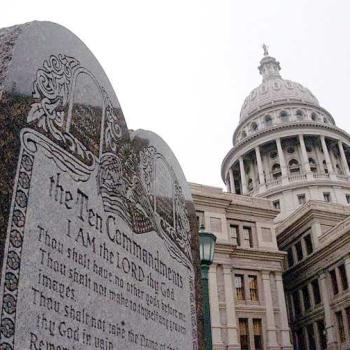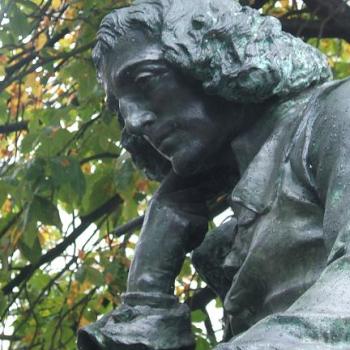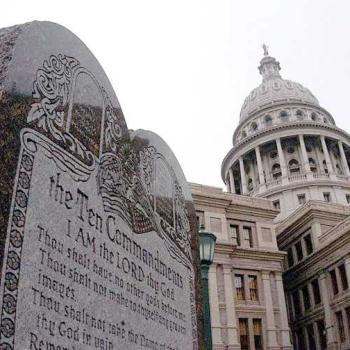A long overlooked document has shed a bit of new light on the life of Moses Ben Maimon, better known as Maimonides (c. 1138–1204), one of the most prominent rabbis of Jewish history. Maimonides was one of the great philosophers of the Medieval period. His work influenced many who came after, including Thomas Aquinas, Baruch Spinoza, and Isaac Newton. And his commentaries on Jewish Law are influential to this day.
Maimonides also was a renowned astronomer and physician. For a time he was the personal physician of Saladin, the Muslim Sultan of Egypt and Syria who defeated armies of Christian crusaders and captured Jerusalem in 1187.
Early Life of Maimonides
Maimonides was a Sephardic Jew born in Córdoba, Andalusia. or today’s southern Spain. His father was a prominent judge who taught his young son the Torah. Sephardic Jews, or Sepharadim, are believed to have lived in the Iberian Peninsula since the late 1st century, after the destruction of the Second Temple. Córdoba then come under the rule of the Moors, who were Muslim, in the 8th century. This rule is remembered as a time in which Muslims, Jews, and Christians lived together harmoniously. The Jews of Córdoba enjoyed a golden age under Muslim rule.
But that golden age faded. In 1148, when Moses Ben Maimon was still a boy, a new regime gained control of Córdoba and put an end to religious tolerance. This was the Almohad Caliphate, a Muslim empire that would, at its peak, control most of the Iberian Peninsula and north Africa. Jews and Christians in Córdoba had a stark choice — convert to Islam, leave Iberia, or die. Maimonides’s family became refugees. Eventually, in 1160, they settled in Morocco. After a few years Maimonides left Morocco for Palestine with his father and brother. By 1168 he was living in Egypt, where he spent most of the rest of his life.
Maimonides is believed to have written his first known work of philosophy, the Treatise on Logic, when he was only sixteen years old and still a refugee with his family. He wrote the Treatise in Arabic. A Hebrew translation by Rabbi Moses Ibn Tibbon (d. 1283) brought the work into wide circulation.
Maimonides’s Greatest Works
His first religious masterpiece, the Commentary on the Mishnah, was completed in 1168, when Maimonides was 30 years old. The Mishnah consists of teachings that had been transmitted orally over generations, and it was compiled around 200 CE. It explains the many laws governing Jewish life through multiple legal opinions and occasional stories. It is the foundation of the Jewish oral tradition. The Mishnah also is part of a larger collection called the Talmud. Writing in vernacular Arabic, Maimonides sought to provide clear and practical guidance to the Mishnah, a text that many found disorganized and hard to read. Scholars have noted that Maimonides drew upon Aristotle and Plato in this work. Included in the Commentary is the The Thirteen Principles of Jewish Faith.
The Mishneh Torah, completed in 1177, is a 14-volume comprehensive compendium of Jewish Law. In this work Maimonides presents every part of Jewish Law as serving a rational purpose. The work provides guidance on virtually every aspect of the Law and explains the philosophic foundations of Jewish belief.
The Guide of the Perplexed, completed in 1190, contains Maimonides’s most extensive philosophic discussions. It takes the form of a letter written to a student who cannot decide whether to follow philosophy or the teachings of his religion. It provides a commentary on biblical terms and defends negative theology among other things. The Guide has been considered controversial because of Maimonides’s rejection of literal interpretations of scripture.
The New Discovery …
The “new” discovery was found within the Cairo Genizah Collection at Cambridge University Library. This collection came from a storage room in the Ben Ezra Synagogue in Cairo, Egypt. The storage room contained hundreds of thousands of books and manuscripts that had been stored by Jewish communities for over a thousand years. The collection itself is not new but was received at Cambridge in 1897. It has been a treasure of information on centuries of Jewish life.
A scrap of paper that has been catalogued for several years recently came to the attention of a visiting scholar, José Martínez Delgado, who thought the handwriting looked familiar. “At last, I realised what I was looking at. I had seen this handwriting before,” he said. And he asked his friend Amir Ashur of Tel Aviv University to take a look at it.
“I didn’t say what I was thinking – I just asked him to look at the fragment, too. Then came confirmation of my suspicions. Amir had seen what I had seen. We were looking at Maimonides’ handwriting, in some sort of Romance dialect.”
The text is a glossary written in the Hebrew alphabet that translates more than 90 words into a pre-Spanish language known as Romance. Maimonides was known to write in Hebrew, in Arabic, and in Judaeo-Arabic, an Arabic dialect written in the Hebrew alphabet that employed Hebrew or Aramaic phrases. But until now it was not known he had any knowledge of Romance. Martínez Delgado said, “The glossary covers four semantic categories: colours, flavours and aromas, actions, and food. Why was Maimonides collecting these words? What does it tell us about him?” Perhaps he had a medical or educational reason to collect the words. Or perhaps he was testing his own vocabulary.














